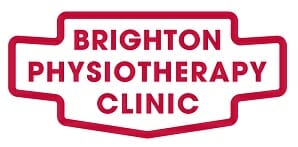Treatment for Cervicogenic Headaches
What is Cervicogenic Headache?
Cervicogenic headache is a type of secondary headache, where although the pain is felt in the head, it’s develops from the neck or cervical spine.
Cervicogenic headaches are similar to migraines and cluster headaches, and can sometimes be misdiagnosed as a migraine, but the distinction between them is that a migraine is rooted in the brain, while a cervicogenic headache is rooted in the cervical spine, neck, or the base of the skull region.
In most cases, a cervicogenic headache is caused by underlying factors, which can be neck injuries, tumors, fracture, whiplash, arthritis, or poor neck positioning, when working.

What are the causes of cervicogenic headache?
Cervicogenic headache arise from problems in the, and are often caused by complications at the vertebrae, at the top of the spine (cervical vertebrae).
Also, people who work in jobs that require them to strain their necks (hair stylists, typist, and carpenters), are prone to suffer from cervicogenic headache. Neck injuries also known as whiplash, can result in cervicogenic headache.
Other medical conditions that can cause cervicogenic headache include: tumors, fracture, infections, arthritis of the upper spine.

In order to properly understand your headache, the doctor may implore a more detailed approach,which will be one of the following:
X-ray – Little doses of radiation are used to examine the image of the bones in your sine and neck.
Computerized tomography (CT) – Different X-rays are taken from varying angles, to create a more detailed one on a single x-ray.
MRI scan (magnetic resonance imaging) – Detailed images of your head, neck, and spine are created, using powerful magnets and radio waves.
Nerve block – A numbing medicine is added to certain nerves, at the back of your head, and observation is made to see if the headache is caused by a nerve block. “Nerve block is also a very effective way,to treat cervicogenic headache. A blood test can also be done, to see if the pain is associated with a disease.
Treatment methods for cervicogenic headache
Treatment for cervicogenic headache focus on eliminating the cause of pain and, managing the situation, to get rid of it completely, and prevent future re-occurrences.
Medication – Non-steroidal anti-inflammatories like ibuprofen and aspirin, anti-seizure medications, antidepressants, as well as other muscle relaxers can be used to reduce the pain.
Physical Therapy – This is effective for treating cervicogenic headache, since it is caused by a structural problem in the neck. Your doctor will identify pain areas, and suggest exercise that will help relieve the pain and strengthen weak muscles.
Spinal Manipulation – This involves a combination of physical therapy, massage and joint movements. It is a specialized practice, and is done by a physical therapist, a chiropractor, or an osteopath.
Surgery – In rare cases and depending on the severity of the condition, a surgery can be carried out, to prevent the nerves from getting squeezed
